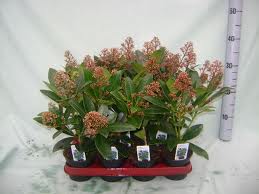|
These tropical perennials are grown for their ornamental foliage. They are mostly natives of tropical America. They are compact and small and usually do not exceed 12" in height. They vary considerably in appearance. Some have threadlike, trailing stems and some have fleshy, stout stems. The leaves are smooth and fleshy and may be oval with the leafstalk at or near the center of the leaf blade, or they may be heart-shaped or lance-shaped; their size may vary from 1-4 inches long. They may be green or striped, marbled or bordered with pale green, red or gray and the petioles of some kinds are red. The tiny flowers are unnoticeable and they grow in the form of cordlike spikes. P. resedflora has white, fragrant flowers and it's the only kind grown for its blossoms. P. capreata (Emerald Ripples) is a bushy plant that has thick bunches of heart-shaped, waxy, dark green leaves. The puckered leaves seem to have brownish valleys and silvery hills. Their stems are pinkish-red. This attractive plant grows up to 6 inches high and wide. The flowers consist of compact, erect spikes of minute creamy white flowers. These are produced irregularly throughout the year. P. metallica has narrow, waxy leaves that have a metallic copper shimmer and a silvery green band running down the center. P. glabella (Wax Privet) has softly fleshy, broad oval, glossy, bright green leaves that grow on long red leaf stalks on red stems. P. tusifolia is a succulent plant with fat brown stems and waxy, green, round leaves that have notches at the end. P. Sandersii variety argyreia is small and bushy with short, red stems and oval, pointy, glossy, bright green leaves that are blotched with silver.
Pot Cultivation
These plants may be grown in pots, pans, or hanging baskets indoors in cool climates or outdoors in mild. They need a minimum winter temperature of 55 degrees. The best soil mixture for them is equal parts of peat moss, loam and sand and they prefer a partially shaded location. Repotting should be done in March. The pots need to have good drainage. The old crocks and as much of the old soil as possible should be removed without damaging the roots. They should then be set in slightly larger pots, just large enough to hold the roots without cramping them. No water should be given until the soil is almost dry, and then it's thoroughly saturated. Repeat this method of watering throughout the year, except, during the winter, the periods between watering should be longer. P. rotundifolia, P. brevipes and others that have climbing growth are great for planting in hanging baskets. First, the baskets should be lined with sphagnum moss and then filled with compost. Small plants, or rooted cuttings, are planted at the top of the baskets, 3 or so inches apart. Hang the baskets in shady spots in the greenhouse and water in the way described above.
Propagation
These plants can be divided at potting time. They are removed and separated into smaller pieces that have a few roots attached. Leaf or stem cuttings can also be taken in the spring or summer. Remove the lower leaves of the shoots and make a cut below the bottom node (joint). Then lay them on a bench for an hour or two to allow a protective corky skin to form over the cuts. Insert the stem cuttings in a propagating case with a bottom heat of 70-75 degrees. Don't close the top completely, since the plants are semi-succulent in nature they do not give off water very fast. When enough roots have formed they can be potted in 3-inch pots or in hanging baskets. Seeds may also be sown.
 |
P. rubella |
Varieties
- P. acuminata;
- P. capreata (Emerald Ripples);
- P. clusiaefolia;
- P. crassifolia;
- P. griseo-argentea;
- P hederaefolia;
- P. incana;
- P. rotundifolia;
- P. obtusifolia variegata (Variegated Baby Rubber Plant);
- P. rubella;
- P. Sandersii;
- P. Sandersii variety argyreia;
- P. velutina;
- P. maculosa;
- P. glabella (Wax Privet) & its variety variegata.
|